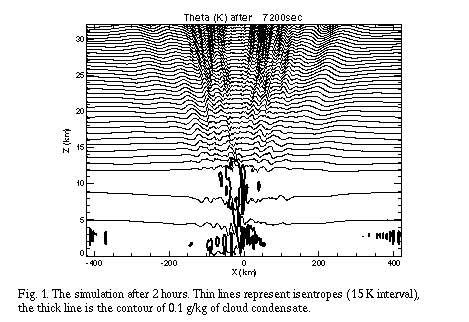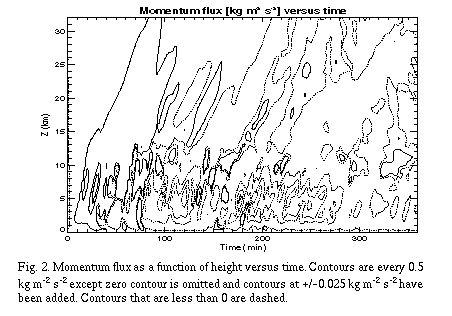
Previous: Introduction Next: EOF analysis Up: Ext. Abst.
Simulation
The numerical simulation that will be analyzed here was performed using the Advanced Regional Prediction System (ARPS - see Xue et al. 1995). ARPS is a model with full moist physics, similar to the model of Klemp and Wilhelmson (1978).The domain used in the simulation was 840 km wide, and 48 km high (the upper 16 km of which was a sponge layer). Horizontal grid spacing was 1 km, and vertical grid spacing was 250 m. The horizontal boundaries were periodic, and the domain moved with the storm at 16 m s-1 relative to the ground. The model was initialized with a sounding given by Weisman and Klemp (1982), which is an analytical sounding based on observed midlatitude squall lines that has been used in other studies of vertically-propagating gravity waves (Fovell et al. 1992, Alexander et al. 1995). The wind profile that was used contains most of its 15 m s-1 of shear in the lowest 5 km of the atmosphere, and no shear in the stratosphere.
The simulation generated vertically-propagating gravity waves that travel away from the storm, as seen in Fig. 1. The simulated displacement of the isentropes ranged up to several hundred meters, as has been observed by Pfister et al. (1993). The waves generate momentum flux that propagates into the stratosphere as shown by Fig. 2. The total momentum fluxes in the stratosphere are small, but this is largely due to the fact that we are adding the contributions of two sets of waves with comparable magnitude and opposite signs. If the stratospheric wind became more westerly with height (for example), then many of the easterly-propagating waves would be absorbed within the stratosphere.

